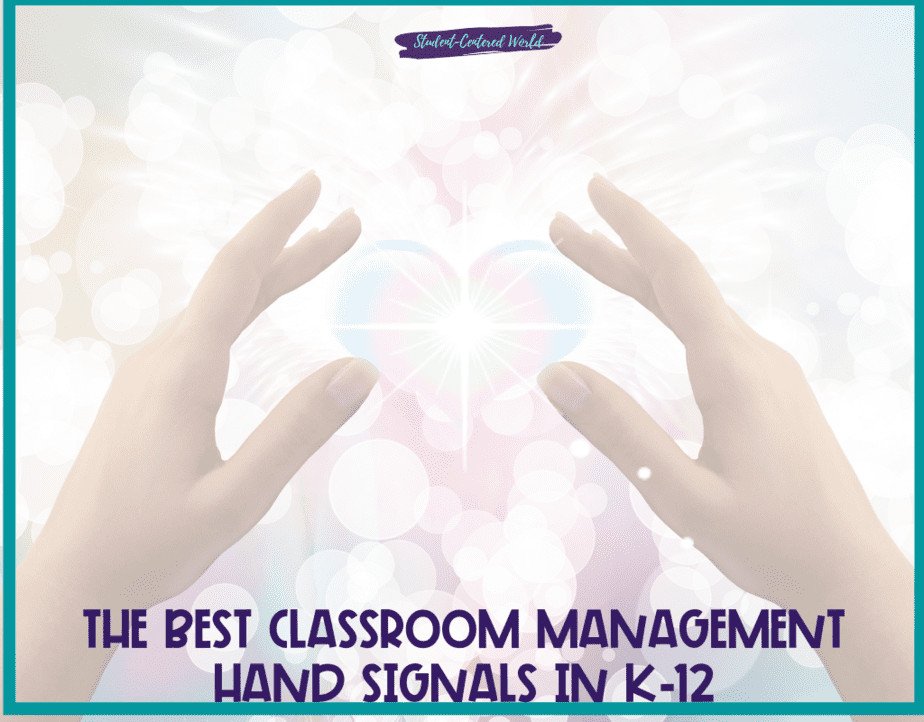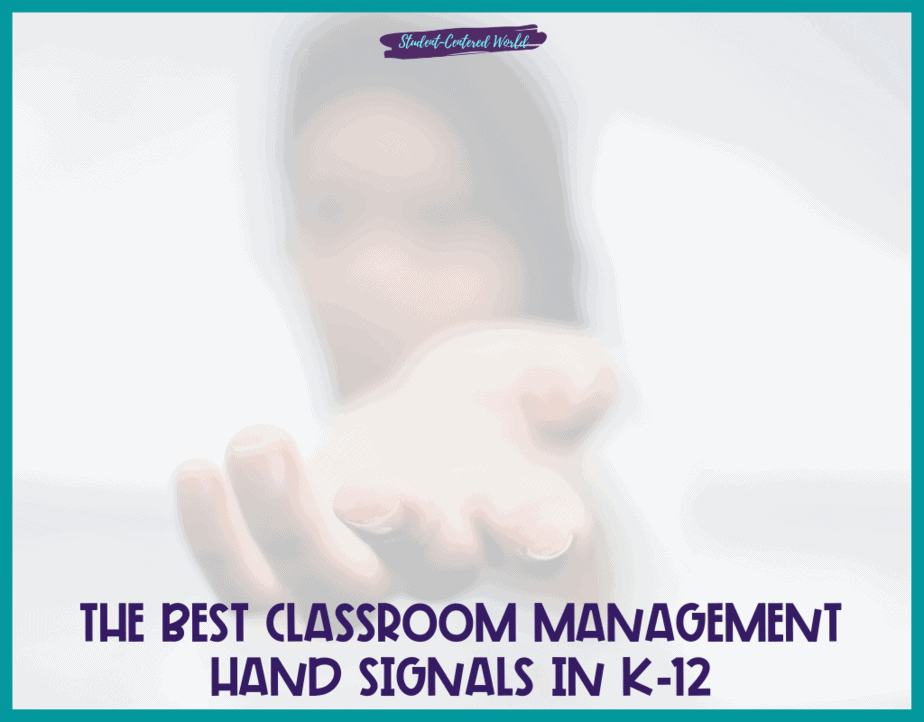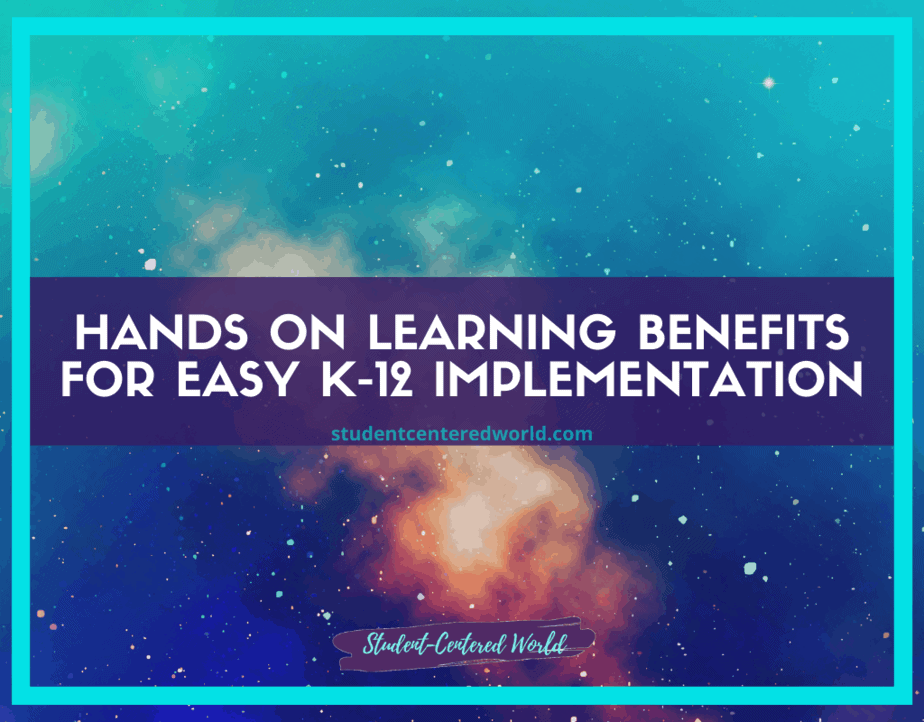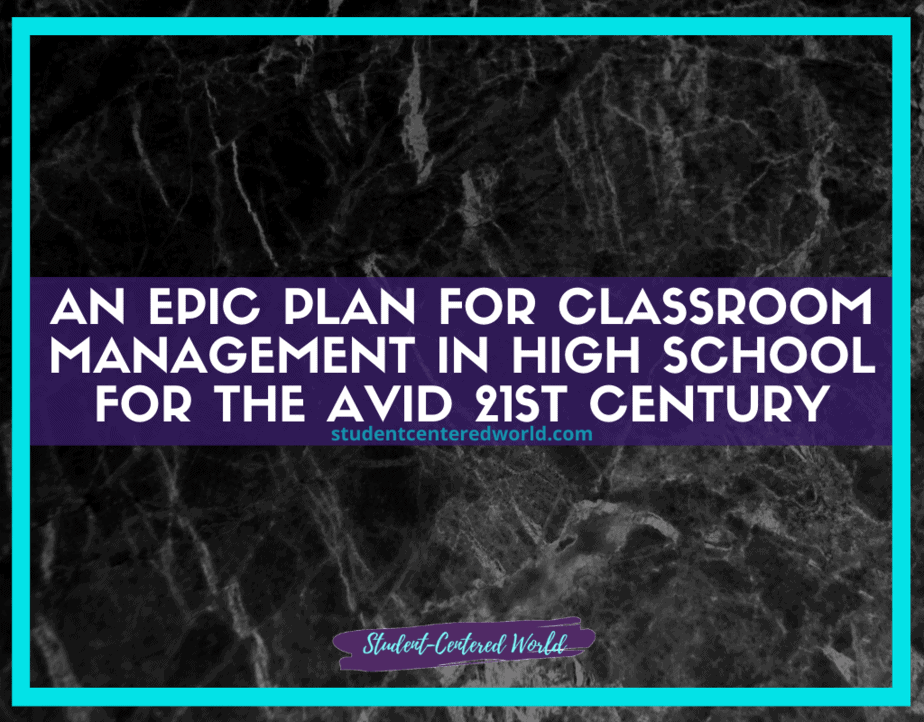Using Classroom Management Hand Signals for Behavior
We are constantly trying to find good tips to help us with classroom management in the classroom. Something that is often discussed is the concept of classroom management hand signals as nonverbal cues to student needs. It’s genius, really. Classroom hand signals help teachers control the class without saying a word. It’s an extremely simple concept, but a highly effective one and a great way to avoid disrupting part of a lesson because of simple questions that can be distracting.
The concept of classroom management transcends different grades, subjects, and levels. While there are several pros to consider before deciding whether or not the use of hand signals in your own class would be an appropriate classroom management tool, it is important to note any cons or drawbacks are can be easily worked around.
Also, it doesn’t matter if this is your first year of teaching or retirement is on the horizon: we need to be creative with effective classroom management nowadays and this is a good idea to help with the best experience in the classroom.
Why Utilizing Hand Signals is Effective
Hand signals are a valuable tool for classroom management, aiding teachers in maintaining a well-organized and focused learning environment. These non-verbal cues are commonly used in various cultural and educational contexts. They include signals for directing student movement, such as indicating a “right turn” or “left turn.”
In smaller group settings, hand signals become especially helpful for maintaining order and facilitating learning. The “palm facing” gesture is a common way to request students’ attention without verbal interruption. At times, a signal similar to showing a “yellow card” can be used to caution or guide students, ensuring a smooth lesson progression.
Moreover, hand signals often involve “circular motion,” and the placement of the hand, such as gestures made at waist level or with the palm of the hand. These universal cues allow teachers to manage their classrooms efficiently and encourage a positive, focused atmosphere for learning.
The Benefits of Classroom Management Hand Signals
There are many benefits to using classroom management hand signals. Above all else, you can give a student a quick glance to keep yourself composed and running smoothly throughout your class, with minimal distraction to others and without disrupting the flow of the lesson by talking. As teachers, we deal with difficult questions and situations on a daily basis and this is an easy way to keep things in flow.

Sometimes, students ask questions that break the entire structure you’re working through (Who has ever asked for questions and been met with a bathroom break request? The answer is everyone!). Other times, students just ask a question at the wrong time or in a way that is disruptive and rude. Whatever the case may be, classroom management hand signals help you regain control of your class by keeping them quiet and waiting for you to answer the question (and are also a visual reminder so you don’t forget to address their need).
Another benefit is that students don’t have to wait until they’re called on to give an answer, which increases participation from students who may not always feel comfortable speaking.
There are many classroom management hand signals, but it’s important to find ones that your students will find appropriate for their age level. If you try using classroom management hand signals that are too difficult for the students to keep up with, they will not be effective. On the opposite end of the spectrum, if your students feel that the process is too juvenile, it not only won’t have the effect you are looking for but may cause even more classroom management issues (especially if the students begin to mock them in the process).
There is a wide variety of classroom management hand signals, ranging from a simply raised hand or thumbs-up signal to something that might rival that of a third base coach. Since teachers have different personalities and teaching styles they can choose what works best for them.
Classroom hand signals are an extremely effective way of teaching classroom management without having to speak. The great part about using classroom management hand signals is that they do not require any prep work other than deciding on an appropriate set of signals and communicating them to your students. This can be for issues they are having, quick assessments, or managing student engagement.
All you have to do is find a few different hand signs and let your students know what they mean!
Classroom Management Hand Signals: How to Use Them in Class
There is no “right” or “wrong” way of using classroom management hand signals, but here are a few tips on how you could effectively implement classroom management hand signals in your class:
1. Let the students know what the classroom management hand signals mean. Depending on your class, you can even have a discussion about students’ hand signals in terms of what they might want to choose for different hand gestures.
2. Have different hand signs for things like calling on students, walking around the room, etc. This way the whole class will be on the same page in terms of expectations (younger students and older alike).
3. Don’t be afraid to create new silent signals as time progresses. If there is no hand signal for something you’re doing or seeing often, go ahead and create something new. You don’t HAVE to use everything from the very beginning of the school year: ebb and flow with what you need in the classroom.
Because classroom management hand signals are meant to help teachers but not disrupt the flow of the lesson, their use will depend on your own dis
Classroom Management Hand Signals for Younger Grades
Using hand signals in younger grades is certainly easier to implement because the younger a student is, the more interested they are in being silly and buying into a concept like this.
That isn’t to say older kids couldn’t benefit from this idea too. It could simply be adapted in the form of more grown-up gestures for middle and high school students, which we will talk about in a minute.
Here are some quick, easy ideas for classroom management hand signals for the younger kiddos.
- “I need help“: Raise one hand with all fingers extended, except for the thumb which is tucked into the palm. This signal indicates that the student needs help with something related to their work.
- “I have a question”: Raise one hand with the index finger extended. This signal indicates that the student has a question about the current topic being discussed.
- “I need the restroom”: Hold up three fingers. This signal indicates that the student needs to use the restroom.
- “I need a break”: Hold up two fingers. This signal indicates that the student needs a break, such as to get a drink of water or stretch their legs.
- “I agree”: Hold up a thumbs-up. This signal indicates that the student agrees with what is being said or suggested.

Using simple hand signals in the classroom can help young students communicate their needs and questions without disrupting the flow of the lesson. It can also help them feel more confident in participating in class discussions and asking for help when needed.
Classroom Management Hand Signals for High School
It’s important to remember that students in high school will require more specific and defined classroom management hand signals, but they are still very useful for maintaining a sense of order.
- “I need clarification”: Hold up two fingers crossed like an X. This signal indicates that the student needs more information or explanation on a particular topic or concept.
- “I have a comment”: Raise one hand with the index and middle fingers extended. This signal indicates that the student has a comment to add to the discussion.
- “I disagree”: Hold up a thumbs-down. This signal indicates that the student disagrees with what is being said or suggested.
- “I’m finished”: Hold up one hand with all five fingers extended. This signal indicates that the student has completed the task or assignment and is ready to move on to the next one.
- “Pinky Up”: If you are constantly noticing that one student is always talking too much or is constantly distracting everyone by tapping their pencil, for instance, hold up your pinky as a non-verbal communication to them to stop what they’re doing.
If you’re looking for a fun way to help your students remember these signals, try turning it into a game. The next time you use one of your classroom management hand signals, ask everyone to guess what it means and see how many they can get right!
Remember that every class is different and each will require its own specific set of classroom management hand signals. The way that you manage your classroom may be drastically different than someone else, so feel free to explore and find something that works best for you. If your students are having trouble remembering, hand signal posters are a great addition to your walls (and can be easily pointed to as a reminder).
Just make sure to put yourself in your student’s shoes when creating them, and add signals that will benefit everyone in the room so that it’s a win-win situation for all involved. All of these classroom management hand signals are super easy to implement. You can even make up your own! The possibilities are endless with classroom management hand signals, so use them all and choose the ones that work best for your class.
As always, remember that these are only suggestions. If you see something that doesn’t work for your class, go ahead and try something else! That’s the great part about teaching in the classroom: if something doesn’t seem to work, you can tweak it and try again. In younger children, take your time implementing these changes over the course of a few days. When you do, they’ll become second nature in no time!
Stop Driving the Teacher Struggle Bus
Are you struggling with student engagement, apathy, or keeping your class on track?
💫💫 There’s hope! 💫💫
Join my free teacher workshop “Choosing Choice” and in just 60 minutes, you’ll craft a practical plan to revitalize your teaching. Discover the magic of student choice in boosting engagement, gain quick implementation ideas, and explore strategies for year-long success.
Unlike overwhelming workshops, my approach guides you in real-time, providing more classroom options, reducing stress, and giving you more personal time.
Plus, you’ll earn a 1-hour professional development certificate and have 7 days of access.
Don’t miss this chance to transform your teaching; click below to secure your spot now!
This article was originally published on October 26, 2021






